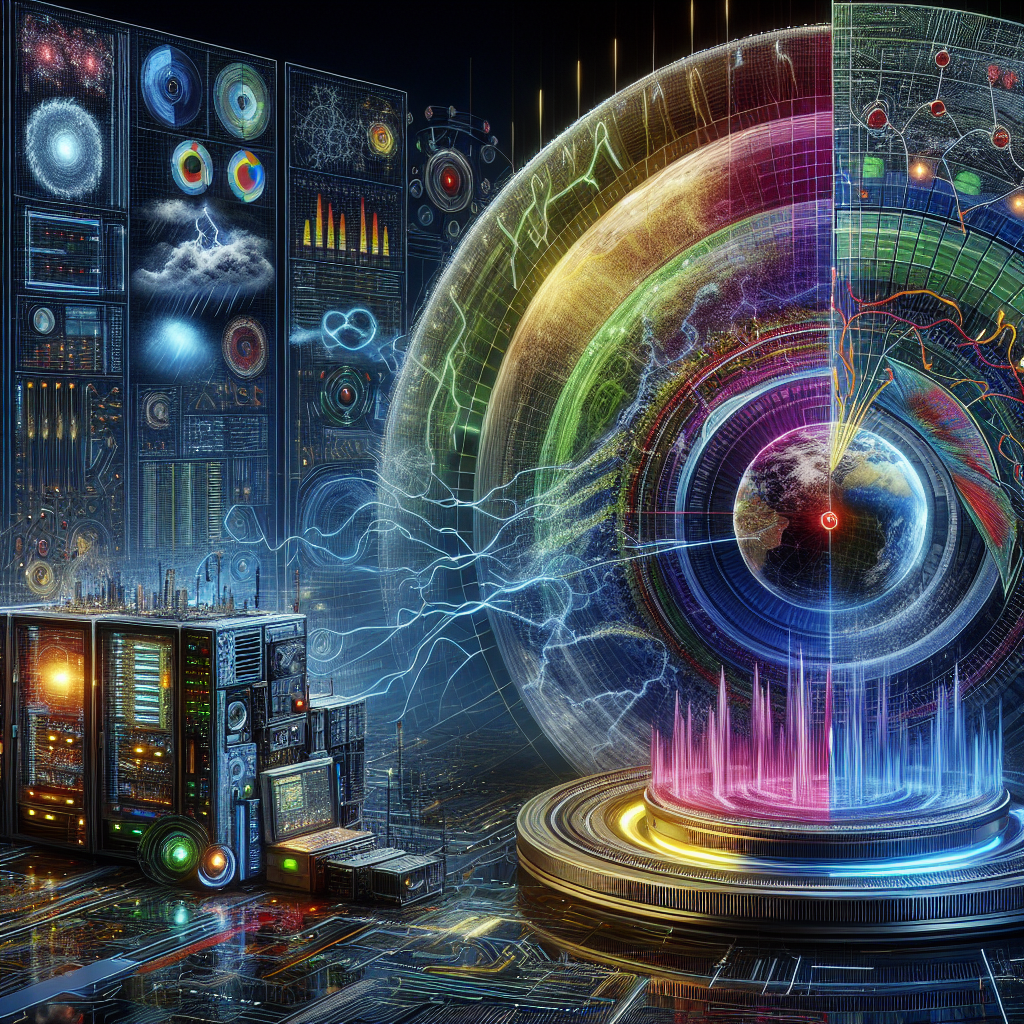Natural disasters have been a part of human history for as long as we can remember. From earthquakes to hurricanes, tsunamis to wildfires, these catastrophic events can cause immense damage to both property and human life. In recent years, there has been a growing interest in using artificial intelligence (AI) platforms to predict and mitigate the impact of natural disasters. These platforms use advanced algorithms and machine learning techniques to analyze vast amounts of data and generate insights that can help authorities make informed decisions before, during, and after a disaster strikes.
In this article, we will take a closer look at some of the AI platforms that are being used for natural disaster prediction and discuss how they are revolutionizing the way we approach disaster management.
1. IBM Watson
One of the most well-known AI platforms for natural disaster prediction is IBM Watson. Watson is a cognitive computing system that uses advanced machine learning algorithms to analyze data and generate insights. In the context of natural disasters, Watson can be used to analyze weather patterns, seismic data, satellite imagery, and social media feeds to predict the likelihood of a disaster occurring and its potential impact.
For example, during Hurricane Harvey in 2017, IBM Watson was used to analyze weather data and predict the storm’s path and intensity. This information was then used by emergency responders to evacuate residents and allocate resources more effectively. Watson’s ability to process vast amounts of data in real-time makes it an invaluable tool for disaster prediction and response.
2. Google AI
Google AI is another platform that is being used for natural disaster prediction. Google’s AI algorithms can analyze satellite imagery, weather data, and other sources of information to generate predictive models of natural disasters. These models can help authorities identify high-risk areas and take proactive measures to mitigate the impact of a disaster.
For example, Google AI has been used to predict the spread of wildfires by analyzing satellite imagery and weather patterns. By identifying areas that are at high risk of fires, authorities can deploy resources more effectively and prevent the loss of life and property.
3. Microsoft Azure
Microsoft Azure is a cloud computing platform that offers a range of AI tools for natural disaster prediction. Azure’s machine learning algorithms can analyze data from various sources, such as weather stations, seismic sensors, and social media feeds, to generate predictive models of natural disasters.
For example, Azure has been used to predict earthquakes by analyzing seismic data from sensors around the world. By analyzing patterns in the data, Azure can generate alerts when there is an increased likelihood of an earthquake occurring, allowing authorities to take preventive measures.
4. NVIDIA Deep Learning
NVIDIA Deep Learning is a platform that offers advanced deep learning algorithms for natural disaster prediction. Deep learning algorithms can analyze vast amounts of data and identify patterns that are not easily detectable by traditional machine learning techniques.
For example, NVIDIA Deep Learning has been used to predict tsunamis by analyzing seismic data and oceanographic data. By identifying patterns in the data that are indicative of an impending tsunami, authorities can issue warnings to coastal communities and evacuate residents before the disaster strikes.
5. Amazon Web Services (AWS)
Amazon Web Services (AWS) is a cloud computing platform that offers a range of AI tools for natural disaster prediction. AWS’s machine learning algorithms can analyze data from various sources, such as weather stations, satellite imagery, and social media feeds, to generate predictive models of natural disasters.
For example, AWS has been used to predict the path of hurricanes by analyzing weather data and generating predictive models of the storm’s trajectory. By accurately predicting the storm’s path, authorities can evacuate residents and allocate resources more effectively.
FAQs
1. How accurate are AI platforms for natural disaster prediction?
AI platforms for natural disaster prediction are constantly improving in accuracy and reliability. While no system can predict natural disasters with 100% accuracy, AI platforms can provide valuable insights that can help authorities make informed decisions before, during, and after a disaster strikes.
2. How are AI platforms trained to predict natural disasters?
AI platforms for natural disaster prediction are trained using vast amounts of data from various sources, such as weather stations, seismic sensors, satellite imagery, and social media feeds. By analyzing this data, AI algorithms can identify patterns and generate predictive models of natural disasters.
3. Can AI platforms prevent natural disasters from occurring?
While AI platforms cannot prevent natural disasters from occurring, they can help authorities take proactive measures to mitigate the impact of a disaster. By providing early warnings and predictive models, AI platforms can help authorities evacuate residents, allocate resources, and respond more effectively to disasters.
4. Are AI platforms for natural disaster prediction expensive to implement?
The cost of implementing AI platforms for natural disaster prediction can vary depending on the size and scope of the project. While some platforms may require significant investment in infrastructure and resources, others can be implemented at a lower cost using cloud computing services and open-source software.
5. How can I learn more about AI platforms for natural disaster prediction?
There are many resources available online that provide information on AI platforms for natural disaster prediction. You can also attend workshops, conferences, and training programs to learn more about the latest advances in this field. Additionally, you can reach out to organizations and researchers who are working on AI platforms for natural disaster prediction to learn more about their work and how you can get involved.
In conclusion, AI platforms are revolutionizing the way we predict and respond to natural disasters. By analyzing vast amounts of data and generating predictive models, these platforms can help authorities take proactive measures to mitigate the impact of disasters and save lives. While no system can predict natural disasters with 100% accuracy, AI platforms can provide valuable insights that can help us build more resilient communities and protect ourselves from the devastating effects of natural disasters.

